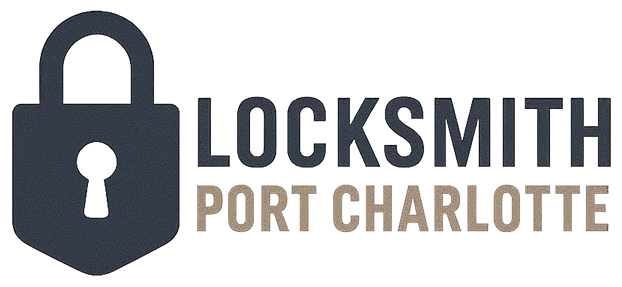Tips for Making Your Home Look Occupied While Away
A quiet, dark house with overflowing mail is an open invitation for trouble. With a bit of planning—and the right mix of lighting, sound, movement, and neighborhood coordination—you can create a convincing “someone’s home” signal that runs on autopilot while you’re away.
Core Principles: Realism, Variation, and Redundancy
The goal is credible normalcy. Lights that follow human patterns, low-level sounds in the evening, ordinary exterior activity, and no obvious “away” signals. Think variation (not the same lights on at the same time every night), layers (lighting + sound + exterior cues), and redundancy (backup triggers if a device fails). Avoid staging that looks robotic—burglars notice rigid schedules and “all-on” lighting.
Work from the outside in: what is visible from the street or a sidewalk first, then what’s audible or visible through windows, and finally what deliveries, vehicles, and online behavior might leak your absence. Every choice should be simple enough that you can repeat it on your next trip.
Lighting Schedules that Mimic Real Life
Use a mix of smart bulbs, plug-in timers, and motion sensors to create believable patterns. Aim for warm, low-to-medium brightness in lived-in spaces during the evening, and darkness during normal sleep hours.
Smart Bulb Scenes with Randomization
Create scenes for “dinner,” “TV time,” and “wind-down,” and enable randomize/offset features by ±15–45 minutes. Rotate which rooms activate so it doesn’t look like a static set.
Layered Timers
Combine a dusk-to-dawn porch light with interior lamps on staggered timers (e.g., living room 7:05–9:10 PM, hallway 8:00–8:30 PM). Random offsets keep patterns human.
Curtains and Shadow Play
Keep blinds in their normal positions. Aim lights at walls, not windows, to create soft, moving shadows that suggest activity without broadcasting your layout.
Motion-Triggered “Late Night” Cue
A dim hallway or bathroom night-light on motion near the front of the home can hint at someone awake briefly after midnight.
Sound & Activity without Broadcasting
Sound carries realism, but keep volume modest and schedules natural. Use devices that can be randomized or voice-controlled by a trusted neighbor.
Low-Volume Soundtracks
Schedule a talk-radio or news podcast at dinner time for 30–60 minutes. Avoid high-volume music or repetitive loops that alert attentive passersby.
TV Light Simulators
A TV-simulator lamp produces color shifts like a screen in use. Run it 45–90 minutes on varying nights, not every night.
Robot Vacuum Timing
A scheduled robot vacuum every few days between 6–8 PM creates faint sound and randomized movement shadows—just ensure it won’t be visible from windows.
Smart Speakers as Intercom
Give a neighbor limited access to trigger a brief “Hey Google, play jazz in the living room” once in a while. Keep permissions temporary.
Outside Cues that Suggest Occupancy
From packages to lawn care, exterior signals are the biggest giveaways. Plan for upkeep, movement, and normal routines.
Mail & Package Control
Pause deliveries or use lockers. Ask a neighbor to claim any stray packages. A full mailbox or cluster of door tags screams “no one home.”
Trash & Recycling Rhythm
Have a neighbor roll bins to/from the curb on schedule. Even an empty bin at the curb for one cycle looks normal from the street.
Lawn, Snow, & Pool
Schedule mowing, edging, or snow shoveling as needed. For pools, set the pump to run as usual; a stagnant surface is a tell.
Vehicles & Driveway
If a neighbor can park in your driveway periodically, it adds strong occupancy signals. Alternatively, move your car occasionally if you’re nearby pre-trip.
Tech Layers that Don’t Backfire
Use tech that fails gracefully. If Wi-Fi drops, lights should keep running on local schedules. If power cycles, devices should resume safely.
Local Schedules + Cloud
Prefer bulbs and plugs that store schedules locally. Cloud control is a bonus, not a dependency.
Smart Locks with Guest Codes
Issue time-bound codes for neighbors or sitters. Keep a physical key in a weather-rated lockbox—not under mats or rocks.
Cameras with Sensible Notifications
Set detection zones and notification digests. Floods of alerts cause fatigue; you’ll miss what matters.
Backup Power for Gateways
A mini-UPS for your router/hub keeps schedules, locks, and critical automations alive through brief outages.
Social Media & Privacy Hygiene
Your most convincing “away” sign may be online. Treat sharing like a security decision, not a habit.
Delay Trip Posts
Post highlights after you return. Real-time stories + geotags = public itinerary.
Trim Audience
Limit who sees check-ins. Review “friends of friends” exposure and public profiles tied to your address.
Avoid Boarding-Pass Brags
Metadata and barcodes leak schedules. Save the photo for later—cropped.
Protect Device Access
Lock down smart-home accounts with MFA. Share temporary guest access instead of your logins.
Condos, Townhomes, and Long Trips
Each living situation changes what “occupied” looks like. Match your strategy to the building rules and sightlines.
Condos & Apartments
Hallways normalize some noise and light. Focus on mail/package holds, smart lock codes for the super, and subtle evening lighting visible through curtains.
Townhomes with Shared Walls
Coordinate with neighbors on bin movement and a single driveway vehicle swap. Avoid loud automation that becomes noticeable.
Multi-Week Travel
Create a 10–14 day lighting pattern that repeats with variations. Schedule yard service and interior checks every 7–10 days.
Seasonal Homes
Use professional checks, mail forwarding, and exterior maintenance contracts. Keep a lockbox for authorized service only; rotate codes after each visit.
Common Giveaways That Signal “Empty House”
Don’t undo good planning with one obvious oversight. Here are frequent mistakes and better alternatives.
All Lights On, All Night
Looks staged. Use two or three rooms max, with random offsets and realistic quiet hours.
Overflowing Mail
Hold mail, redirect deliveries, and ask a neighbor to spot-check your porch.
Frozen Exterior
No bin movement, static doormat, and untracked footsteps after snow/rain are flags. Schedule small changes.
Obvious Camera Blitz
A forest of blinking cameras can read as “expensive and empty.” Balance visible deterrence with subtlety.
Three Quick Checklists
Use these compact lists to stage your home in under an hour. Save a copy to your phone so you can reuse it for the next trip.
- A Week Before Set up lighting schedules with randomization; pause mail; coordinate bin movement; confirm lawn/snow service; create neighbor guest code; test smart devices on local schedules.
- Day Of Place one car in the driveway if possible; run a brief evening sound routine; verify porch camera zones and notification digests; lock windows; arm alarm in “away” mode with pet-safe sensors.
- While Away Limit social posting; ask neighbor to text after package pickups; rotate a light scene remotely once or twice a week; keep alarm and cameras updated.
Build a Simple Neighbor Network
Nothing beats a friendly set of eyes. Trade favors: you move bins and check porches when they’re away; they do the same for you. Keep it easy and reciprocal.
Clear Roles
One person grabs packages, another moves bins, a third verifies lighting from the street once mid-trip.
Limited Access
Provide a single guest code with expiration. Avoid handing out physical keys unless stored in a lockbox.
Quick Updates
Use a shared message thread for “all good” check-ins and any anomalies with photos as needed.
Thank-You Loop
Bring back a small gift or return the favor promptly—networks work when everyone benefits.
Finishing Details that Sell the Illusion
The best setups feel effortless and normal—because they mirror your routine, just automated.
Visible Everyday Clutter
A jacket on a chair back, an open (but empty) cookbook on the counter, or a water glass by the sink—minor signs of life visible from a distance.
Irregular Timing
Offset by 20–40 minutes. People are inconsistent—your house should be too.
Entryway Glow
A low-watt lamp near the foyer on a timer suggests evening activity without advertising your floor plan.
Reset When You Return
Turn off automations, restore normal lighting, and clear any “vacation” profiles so future patterns don’t reveal habits.
Make Your “Someone’s Home” Plan Foolproof
Want a pro eye on door hardware, locks, and smart-home settings before your trip? Get a quick walkthrough and a personalized lighting/entry plan that looks lived-in—without creating new weak points.

